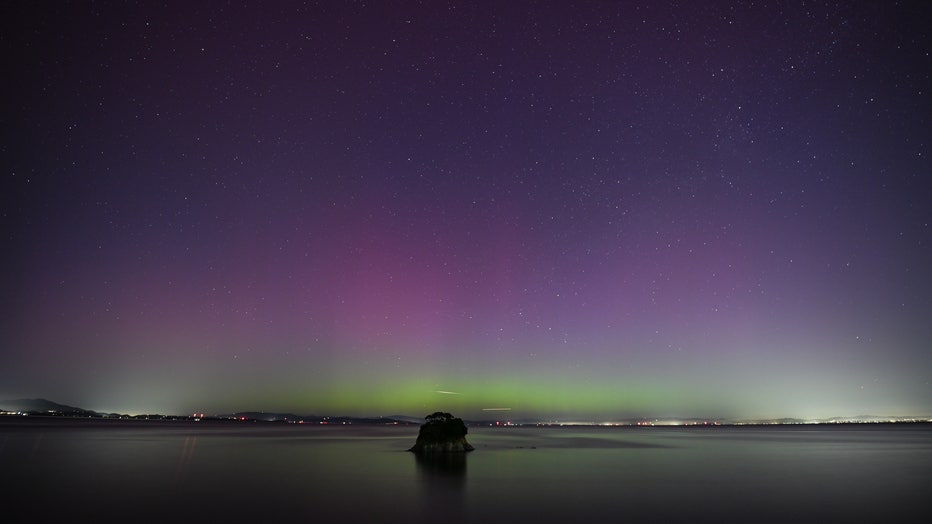Northern lights could return to US with another geomagnetic storm
The sunspots that brought breathtaking Northern Lights to much of the U.S. earlier in May are back, which could mean more solar storms and the possibility of another aurora borealis spectacle.
NOAA’s Space Weather Prediction Center has issued a Geomagnetic Storm Watch through the weekend. Experts say it’s too early to know if we’ll see another G5-level storm, the highest on the scale and the one that caused the intense Northern Lights on May 10. That’s when strong solar flares and outbursts of billions of tons of plasma unleashed severe solar storms that produced auroras in unexpected places.
Friday morning (May 31), NOAA issued a G1-level watch, predicting the aurora could be visible in the northernmost parts of the U.S. like Michigan and Maine. Minor disruptions to satellites and power grids are possible, NOAA said.

Northern Lights (Aurora Borealis) illuminate the sky of San Francisco North Bay as seen from China Camp Beach in San Rafael, California, United States on May 11, 2024. (Photo by Tayfun Coskun/Anadolu via Getty Images)
The two sunspots that caused the first G5-level storm since 2005 will be closer to the middle of the sun over the next 12 days, FOX Weather reports. If they produce a coronal mass ejection, Earth could see another intense geomagnetic storm.
The sun is moving to the solar maximum phase of its 11-year cycle – meaning space weather will be very active into next year.
RELATED: Moon will 'kiss' Saturn on May 31 and other summer sky events to watch
"We're just kind of getting near solar Max, and we're not even there yet, necessarily. So yeah, this cycle is going to prove to be interesting," Shawn Dahl, service coordinator for NOAA’s Space Weather Prediction Center, told FOX Weather. "We could certainly see the potential for more G4-level storms. I can't say G5, though, because it's so rare, right? We don't have any new measure of confidence of saying that we may have another G5 to come. But it's certainly not outside the realm of possibility."
If you’re hoping to catch another glimpse of the Northern Lights, you can follow the Space Weather Prediction Center for updates.
What are geomagnetic storms?
Rare G5 geomagnetic storm triggers Northern Lights in US
An 'extreme' G5-level solar storm is happening for the first time since 2003, triggering Northern Lights in some Southern states as far as Alabama and Georgia. The Space Weather Prediction Center issued its first "severe" Geomagnetic Storm Watch since January 2005 and said the event was the most powerful since the Halloween event of 2003. LiveNOW's Austin Westfall spoke about the celestial phenomenon with SWPC Coordinator Shawn Dahl.
The sun’s intense magnetic energy is the source of solar flares and eruptions of plasma known as coronal mass ejections. When directed toward Earth, they can create stunning auroras but also disrupt power and communications.
Galileo was among the first astronomers to turn a telescope skyward and study sunspots, back in the early 1600s. Solar flares and coronal mass ejections tend to occur near sunspots, dark patches as big as Earth that are located near the most intense portions of the sun’s shifting magnetic field.
A solar cycle is a sequence the sun’s magnetic field goes through every 11 years, when the field flips. Geomagnetic storms could become more frequent over the next year as the sun begins to move into the solar maximum phase of its 11-year cycle.
FOX Weather, FOX 13 Seattle and The Associated Press contributed to this report.

